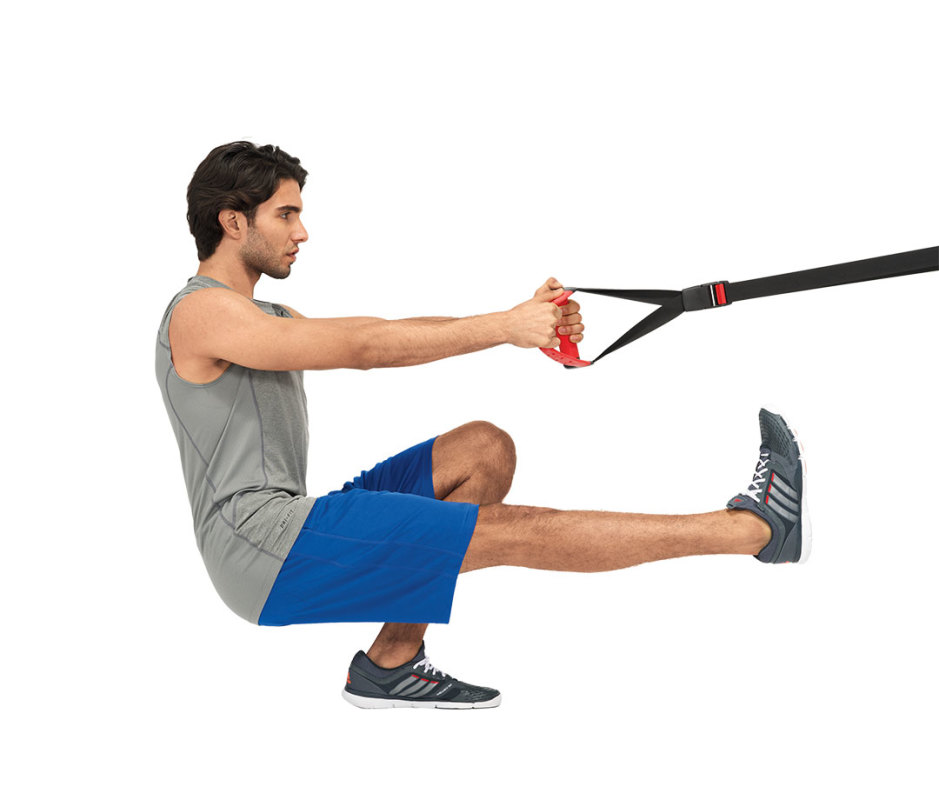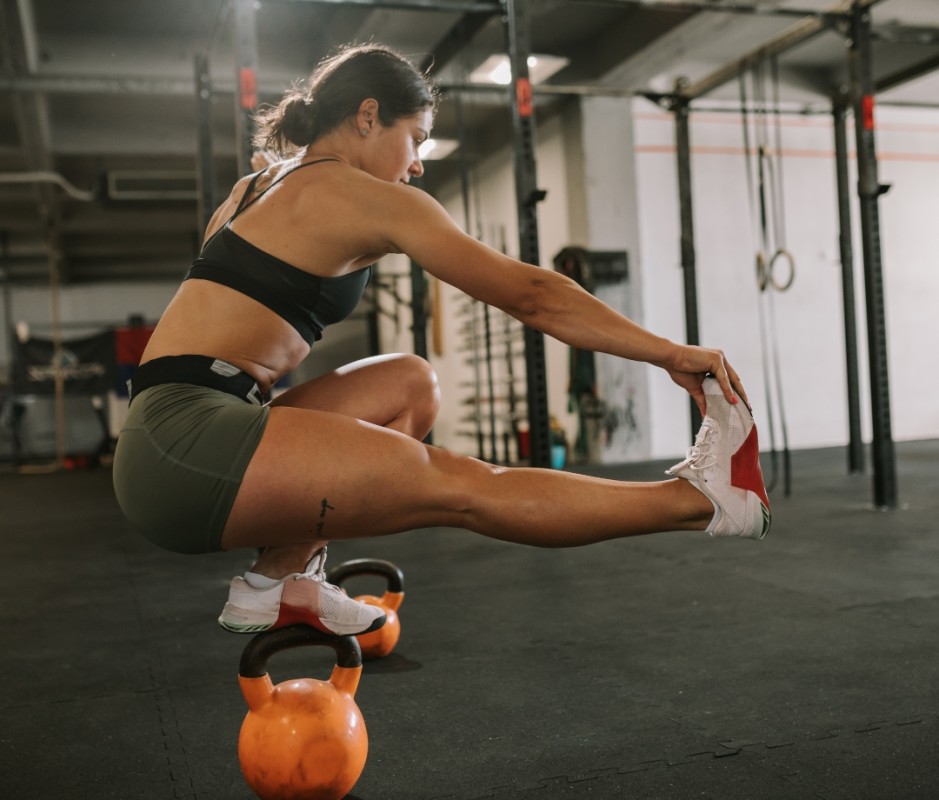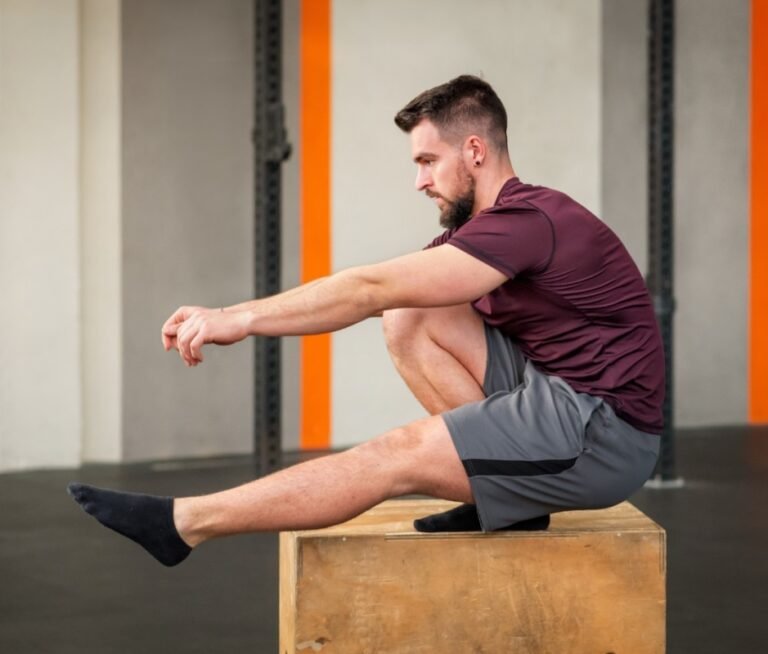The pistol squat is the ultimate test of lower body strength, balance and mobility. Unlike regular squats, this awkward exercise requires you to lower your body on one leg while keeping the other leg stretched straight out in front of you. It’s a full-body challenge that pushes your limits and exposes any weaknesses, from strength imbalances (especially single-leg strength deficits) to mobility limitations. If you’ve ever tried to make one, you know it’s no easy feat. This is why pistol squats often become a leg exercise for fitness enthusiasts—it’s as much about finesse as it is about functional fitness.
Whether you’re an athlete looking to boost your performance or someone who loves a challenge, learning the pistol squat form will pay off. It can improve your squat depth. increasing ankle mobility. and fire up your quads, glutes and core like nothing else.
In this guide, I’ll take you step-by-step through the entire process. You’ll learn the basics of pistol squat form, how to break the movement down into manageable parts, and get a detailed pistol squat progression plan to help you build full depth. Plus, we’ll cover the muscles to work, common mistakes to avoid, and the benefits of incorporating this beast of a movement into your routine. Whether you’re a beginner or have struggled with full range of motion, this guide has you covered.
The pistol squat may not be suitable if you have lower body issues, especially involving your knees, ankles or hips. Lack of mobility or existing injuries can make this exercise more challenging and potentially dangerous. It is best to consult a physical therapist or trainer before attempting the pistol squat if you are experiencing tightness, pain, or imbalances. They can help you address mobility issues, strengthen weak areas, and guide you through modifications to ensure you’re moving safely.
Related: Best Squat Exercises to Build Muscled Legs
What is the Pistol Squat?
You may have seen some of the internet’s top exercisers perform this difficult move and wondered—what exactly is a pistol squat? The pistol squat is a single leg squat where you lower yourself into a deep squat on one leg while the other is extended straight out in front of you. It’s an advanced movement that challenges your strength, mobility and stability in ways that a regular squat doesn’t. Think of it as the squat that separates the pros from the amateurs. The combination of balance, flexibility and raw power makes it a true test of full body control.
Unlike traditional squats, where both legs share the load, the pistol squat forces one leg to handle all the weight, making it an intense unilateral exercise. This builds serious leg strength, activates your core, and requires sharp focus to keep you from tipping over (eyes straight the entire time!). Because it isolates one leg, it is effective in correcting muscle imbalances and enhancing athletic performance, as each leg is pushed to its maximum capacity independently. Plus, let’s be honest – when you finally nail a clean pistol squat, it’s a major bragging rights moment in any gym!
I can personally attest to the demands that the pistol squat instills on your body. In my 10+ years as an athletic performance coach and Olympic weightlifting coach, I have seen athletes and clients who can squat over 400 pounds for reps humbled by the precision, balance, and coordination this movement requires. Mastering the pistol squat isn’t just about brute strength—it’s about developing motor control, body awareness, and patience. But you’ll feel unstoppable once you work through the steps. So, how can you understand the basics and move on to this impressive feat?
How to do a Pistol Squat
Here’s a step-by-step breakdown of how to do the perfect pistol squat:
- Start standing up: Stand with your feet about hip-width apart. Engage your core and raise your arms in front of you for balance.
- Shifting weight to one leg: Lift one leg off the ground and hold it straight out in front of you, with your leg bent and toes pointed up. This is your starting position.
- Lower into the Squat: Keep your chest up and your back straight and slowly lower onto your standing leg. Your hips should move back as if you were sitting in a chair. Your extended leg remains in front and your arms can reach forward to help with balance.
- Download in full: Lower as far as you can, ideally until your hamstring touches your calf. Your non-working leg should remain just above the ground.
- Drive Up: Push through your heel and rise back up to the starting position. Keep your core tight and balance throughout.
Getty Images/Photology1971
Step-by-Step Squat Pistol Progression Plan
Achieving the full pistol squat doesn’t happen overnight. But with the right progression plan, you’ll gain the necessary strength, mobility and balance over time. Here’s a breakdown of exercises to help you get there.
Bodyweight squats
Master squat basics to ensure you have the leg strength and mobility for deeper movements. Aim for full depth (thighs parallel or lower) with good form.
Box Pistols (Assisted Pistol Squat)
Stand on a box or bench and lower into a squat, using the box to decrease your range of motion (shown above). Reducing your range of motion helps you practice balancing on one leg without hitting full depth.
Dylan Coulter
TRX or Pistol Squats with assistance
Use a TRX belt or resistance band for assistance. Hold the strap in front of you and use it for support as you lower into a pistol squat. Assisted pistol squats teach your body the movement pattern without the full balancing requirement.
Raised pistols squats
Place your heel on an elevated surface (such as a small plate or step) to aid in balance and mobility as you perform the squat. Focus on the eccentric (lowering) part.
Compensation pistols
Hold a lighter weight or kettlebell in front of you to balance your body as you squat. Holding a counterweight helps with balance and allows you to focus on your leg strength.
Negative Pistol Squats
Lower yourself into a pistol squat position as slowly and controlled as possible. Once you reach the bottom, use both feet to stand back up. Negatives help build strength in the lowering phase.
Full pistol squats
Once you’ve completed the progressions, you’re ready to try the full pistol squat. Focus on slow and controlled movements to maintain balance and proper form.
Advanced Move: Dragon Pistol Squat
Try the dragon pistol squat to spice up your leg workout even more. This variation involves a lot of mobility as you sweep your non-working leg behind your body as you squat, adding an extra challenge to balance and mobility. If you’ve mastered the pistol squat, try some steps like the TRX or Band-Assisted option to build on the Dragon Pistol Squat.
Related: 3 Fitness Benchmarks You Probably Can’t Hit
What muscles do pistol squats do?
The pistol squat is a full-body exercise, even though it primarily targets the lower body. Here’s a breakdown of the main pistol squat muscles worked:
Four-headed
Your quads bear the brunt of the work as you lower and rise in the squat. Since you’re only using one leg, the demand on your quads is much greater than in a regular squat.
Buttocks
Your glutes help control your descent and ascent, making them essential for both strength and stability during the pistol squat.
Hamstrings
The hamstrings work to stabilize the knee and hip joints, especially during the lowering phase.
Core
Your core muscles are constantly engaged to keep you upright and balanced during the movement.
Calves
Your calves stabilize your foot and ankle, preventing you from swaying or falling.

Getty Images/Andria Nikolic
Pistol Squat Common Mistakes
Mastering the pistol squat requires precision, so it’s essential to avoid these common mistakes:
Lean forward too much
Keep your chest up and maintain a neutral spine. Leaning too far forward throws off your balance and puts unnecessary stress on your lower back.
Bent knee
Your knee should follow your toes. Do not allow it to cave in as this can lead to injury.
Not low enough
While it’s important to work within your range of motion, going down only partially defeats the purpose of the pistol squat. Aim for a full range of motion.
Building on Momentum
Avoid bouncing off the bottom. Use controlled power, especially when climbing.
Ignoring the basic commitment
A weak or uninvolved core leads to instability and poor form. Keep your abs tight throughout the movement.
Related: 50 Best Arm Exercises for 2024
Benefits of Pistol Squats
Why bother learning such a demanding move? The benefits of pistol squats are many and can up your fitness game:
Leg Strength & Hypertrophy
Pistol squats fire up your quads and glutes, helping you build strength and muscle in each leg separately. This reduces strength imbalances and enhances your overall athletic performance.
Mobility & Flexibility
Pistol squats require deep hip and ankle mobility, improving joint health and range of motion.
Core stability
Since balance is a key component, your core muscles work overtime during pistol squats, resulting in a stronger, more stable core.
Improved balance and coordination
Balancing on one leg while moving through a full range of motion enhances proprioception (your body’s awareness of itself in space), which translates into better coordination.
No equipment required
Pistol squats are a great bodyweight exercise that you can do anywhere, whether it’s at the gym, at home, or on the go.
Advanced Sports Performance
Learning the pistol squat helps with movements like sprinting, jumping and cutting, making them ideal for athletes looking to build functional strength.
Related: How to make a squat harder—with less weight
